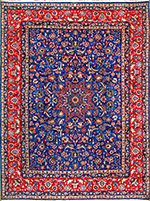Textiles Studies

Textile Research Works
Textiles (from Encyclopedia of Archaeology)
Date of this Version
2008
Document Type
Article
Citation
Encyclopedia of Archaeology (Second Edition) Volume 2B, 2008, Pages 765-77.
doi: 10.1016/B978-0-323-90799-6.30028-3
VOR - 17 November 2023
Abstract
Taking as a starting point the fact that the importance of textiles is not reflected in the archaeological record, this article addresses the cultural significance and pervasive presence of textiles in all societies. Textiles often present complex structures and represent the highest technological achievements of a culture, but due to their fragile and organic composition, they often do not survive, except in extraordinary circumstances of extreme dryness, permafrost or anaerobic conditions. As artifacts, textiles survive as fragmentary physical objects that once served as garments, furnishings, means of storage and transport, architectural elements, or items used for the care and tending of animals. Serving many functions, they also express cultural values and ideals through materials, structures, colors, forms, and patterns. Textiles may communicate status, wealth, identity, and serve to distinguish individuals and to define groups through visual forms. Sections on textiles and society, textile technologies, and textile structures and patterns provide a brief introduction for the contextual understanding of archaeological finds, and a succinct survey of significant finds of archaeological textiles in Egypt and the Near East, East Asia, Europe, South America, and North America. A review of textiles which have survived in nonarchaeological contexts, offers comparative consideration of the ways in which historical textiles may be used to amplify the archaeological record.


Comments
Links to Science Direct (subscription). Copyright © Elsevier.